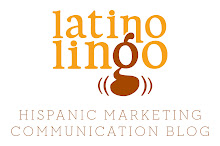The expanding appetite for Latino cuisine among non-Hispanics and the increase in the US Hispanic population -- will drive sales to $10 billion in 2014,
according to "Hispanic Food and Beverages in the U.S.: Market and Consumer Trends in Latino Cuisine.
Packaged Facts projects that the buying power of Latinos will reach $1.3 trillion in 2013 up from $984 billion in 2008, representing a cumulative growth rate of 31 percent. In addition, Hispanic shoppers spend significantly more than other groups on food consumed at home, due to the importance of family mealtime and larger family units.
Packaged Facts said it separates the Hispanic food and beverage market into three segments: Mainstream Mexican (tortillas, salsa, tacos, burritos, nachos, refried beans, Tex-Mex cuisine, and other products that have become part of the American culture); Authentic Hispanic (products either imported from Hispanic countries to the United States or products made domestically that use traditional recipes); and Nuevo Latino (products with south-of-the-border flair, including traditional American foods made with Hispanic ingredients, as well as unique new creations that meld a variety of Hispanic flavors and food traditions).
Authentic Hispanic and Nuevo Latino are garnering substantial sales boosts from the US population, the researcher said. The demand has caused new Hispanic food products to pour forth from manufacturers seeking to increase variety to meet the ever restless American appetite for the new and different.
"All three segments of Hispanic food are becoming increasingly available throughout the United States due to expanded distribution through both retail and food service outlets and expanded awareness of these products as a result of mass communications on television and the Internet about Hispanic foods and cooking techniques," said Don Montuori, publisher of Packaged Facts.
"The fact that the Hispanic population is expanding beyond traditional enclaves in California, the Southwest, Florida, and major metropolitan areas like New York and Chicago to communities which previously had either no Hispanic presence or only a small one further benefits the market."
Labels: Hispanic population growth, Hispanic purchasing power

